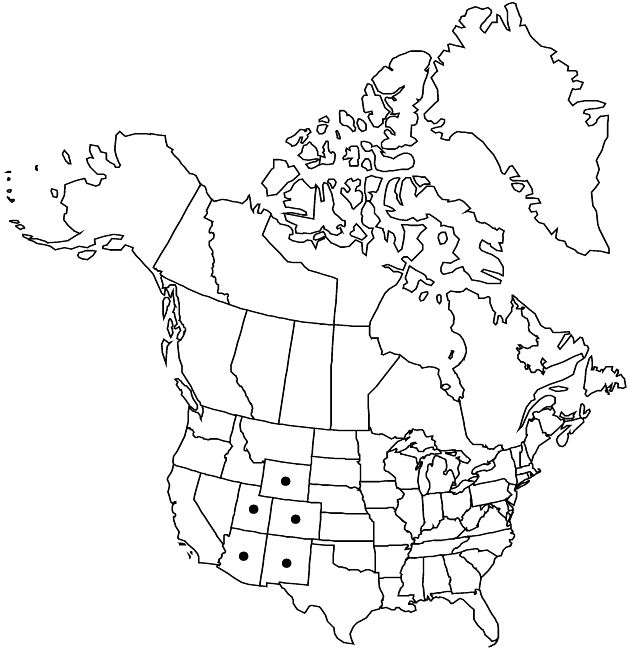Heterotheca fulcrata var. amplifolia
Rev. Heterotheca Pyllotheca, 74. 1996.
Stems moderately to densely short-strigose, eglandular or nearly so. Distal cauline leaf blades ovate to lanceolate, 17–40 × 5–15 mm, margins with few long-hispido-strigose cilia, faces moderately to densely short-strigose (small leaves sometimes nearly white), eglandular or sparsely stipitate-glandular. Subtending bracts ovate, usually large (6–17 × 1.5–5.5 mm), leaflike, well differentiated (sometimes densely strigose when small). Involucres 6.4–10 mm. Phyllaries lanceolate to triangular-lanceolate, faces moderately strigose, usually eglandular. Ray laminae 8.5–14(–16) mm. Cypsela faces moderately strigose. 2n = 18, 36.
Phenology: Flowering (Jun–)July–Sep(–Oct).
Habitat: Dry gravelly soils, coarse granitic soils, disintegrated granite slopes, high rocky summits, dry grasslands with sagebrush, roadsides, transition zone, Ponderosa pine–oak associations, pinyon-juniper zone at edge of Upper Sonoran Desert, mid to higher montane zone
Elevation: 1300–3500 m
Distribution

Ariz., Colo., N.Mex., Utah, Wyo.
Discussion
Variety amplifolia is similar in most respects to var. fulcrata, but the leaf indument is usually densely short-strigose (50–200 hairs/mm2) with few or no glands. Some plants maintain the proximal leaf shape well up the stem, only the few distalmost leaves becoming narrowly ovate-lanceolate; those are similar to Heterotheca villosa var. pedunculata. In southern Utah and eastern Arizona, small-leaved plants may be similar to H. zionensis due to the density of leaf hairs, but in that area the latter typically have densely stipitate-glandular phyllaries, moderately stipitate-glandular distal leaves, and no large bracts subtending the heads.
Selected References
None.